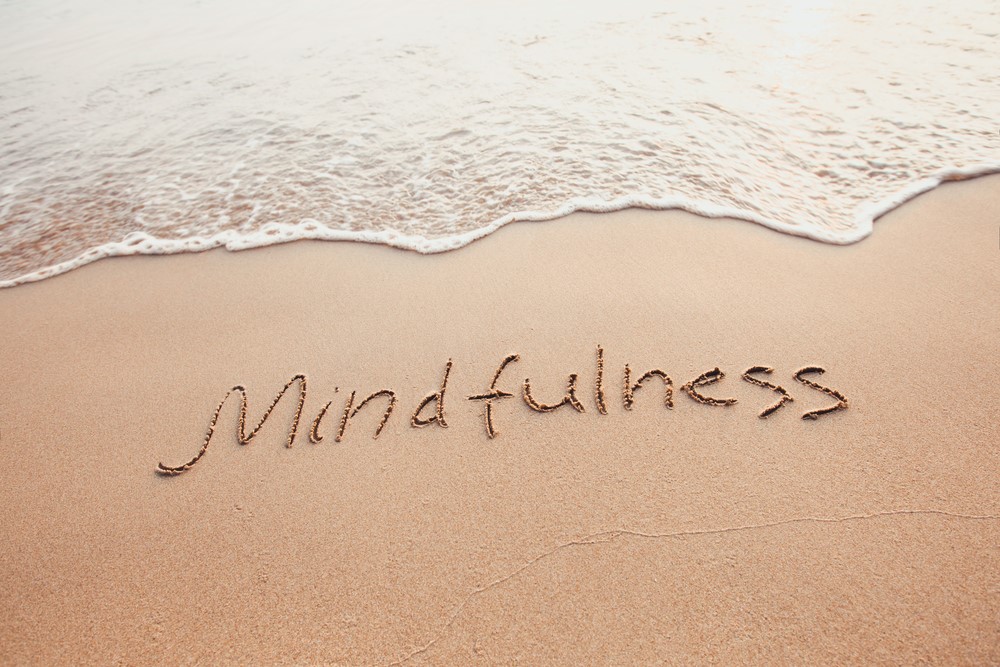
Mindfulness seems to be everywhere these days. It’s promoted as an amazing way to change your experience, even when your situation remains exactly the same. In part, this is because mindfulness focuses on changing your relationship to your thoughts and feelings, rather than altering thoughts, feelings, or situations. Mindfulness for caregivers, then, sounds like a powerful idea.
So, is it?
For the last six months or so, I’ve been strongly focused on the mind and mental health. The project started off as something for my own personal growth and has since expanded dramatically – to the point that I’m well into writing a book on the topic.
One thing I’ve learned along the way is that there are a lot of ways to approach your mind and yourself. Mindfulness is one of these and, yes, it is a powerful one.
But, it’s easy to get hooked on one particular idea. To think that it’s the be-all-end-all and should be applied in all situations.
I don’t think that’s ever the case.
Life is too complex for that, as are humans. And caregiving… phew… you know as well as I do that there’s nothing simple about caregiving.
That’s why I think people need multiple strategies. A mental health toolbox, if you will. That way you can pull out different ideas as the situation demands – even if some of them seem to contradict one another.
Mindfulness is one such technique. It’s useful. It can even be powerful. But, as you’ll see, there are limits too. To use mindfulness well, you need to be aware of when the approach shines and where it is limited.
So, What Is Mindfulness, Exactly?
First of all, mindfulness is a practice. It’s something you learn and come to understand through experience. You’ll never get the full sense of it by reading a blog post or a book, no matter how good the author is.
Mindfulness is also complicated by the fact that there’s no single definition. Instead, authors have their own definitions, which often vary depending on the person’s background and their goals.
In general though, mindfulness is the practice of being fully present, of being aware of where you are, what you’re thinking, and what you’re feeling, without judgment.
Mindfulness is often practiced through meditation, but this isn’t essential. There are plenty of non-meditation mindfulness techniques too (that being said, meditation and mindfulness apps are a powerful place to begin, as they teach you the principles of mindfulness through practice, rather than theory).
How Mindfulness for Caregivers Is Powerful

It Can Have Physical and Mental Benefits
Mindfulness is often associated with improvements to mental health, including decreased risk of depression and anxiety, along with less stress. It may also have physical benefits, like decreasing your blood pressure and your risk of some diseases.
These effects aren’t too surprising.
Many of us live our lives in a near constant state of stress, panic, and worry. We’re often very concerned with what’s going to happen next and with the past, to the point that we’re almost always on edge.
Slowing down, enjoying the world around us, and simply living helps to decrease the stress in our bodies and our minds.
Often Decreases Self-Judgement and Guilt
One thing I love about mindfulness is how it breaks the power of negative thoughts and emotions. It reminds you, among other things, that what you think and feel isn’t you. You’re not defined by what flashes through your mind, not even a little bit.
This is an incredibly important lesson and it’s one that many people miss.
Mindfulness also has a kind quality to it. Many practices involve not just observing your thoughts and emotions, but also being kind to yourself about them (this is particularly true for mindful self-compassion, which uses some mindfulness principles, along with other approaches).
Can Improve Your Emotional Responses
Some people, myself included, find that mindfulness helps to stabilize their emotions.
One reason is that your emotional responses are often an initial emotion paired with a secondary reaction (or secondary disturbance, to borrow a phrase from REBT). This secondary reaction is basically you reacting to your reaction – like feeling guilty for feeling angry or embarrassed about feeling anxious.
Mindfulness gives you the chance to be at peace with your initial response, which then helps to drop down that secondary emotional reaction.
Helps You Focus On The Moment
Mindfulness is a very ‘in the moment’ practice. It focuses on bringing you back to now, so you’re not worrying about the past or the future. This too is powerful for guilt and for reducing your stress.
After all, most of our emotional challenges are linked to how we think things should be or the meaning we attach to what is happening. Mindfulness breaks both of those patterns – making it easier to be in the moment and even enjoy it, regardless of what is or isn’t happening.
The Problems with Mindfulness for Caregivers
Before we get into the problems with mindfulness, let me mention that most of these problems don’t apply in every situation. Some people can apply mindfulness well, without it making any aspect of their life more difficult.
However, beginners often struggle, especially if mindfulness is presented to them as an amazing solution to almost every problem.
It Can Make Action More Difficult
Mindfulness is often associated with acceptance. It’s easy to interpret this as meaning that you should accept everything about yourself, others, and your situation, which is where things start to get problematic.
Let’s make this one clear.
Mindfulness does not mean that you accept everything. It doesn’t mean you should try to be okay with an abusive aging parent or with a caregiving situation that is sucking the life out of you.
If you struggle with this distinction, Acceptance and Commitment Therapy (ACT) may be a better approach for you. Russ Harris’s book The Happiness Trap is a great place to learn more about the approach and get started.
ACT has a strong focus on mindfulness, but it doesn’t stop there. The approach also aims to help individuals to recognize their values and take steps to pursue them. In effect, ACT combines mindfulness and change, giving you an easy-to-follow model for change that fits into the framework of mindfulness.
It’s Hard To Identify ‘Wrong’ Thinking
Mindfulness often involves observing your thoughts and emotions, without judgment and without belief. What you think and what you feel are simply things that are happening. They’re not you and aren’t a reflection of your value as a person.
This approach often implies that there are no right or wrong thoughts. Or, that everything you think and feel is equally valid.
However, there are times where this simply isn’t the case.
Sometimes we end up with underlying stories or assumptions that have no basis in reality at all. For example, anxiety can stem from an underlying view that the world is unsafe.
Similarly, I’ve spent time around passive-aggressive people, so learned how to pay close attention to body language to find out when they were angry. That aspect of my past meant that for a long time I would over-read the body language of other people and make assumptions that had nothing to do with reality.
In those situations and many others, it’s important to understand the underlying stories you’re telling yourself and where your thinking patterns are coming from.
My Personal Experiences

I’ve spent a decent amount of time with mindfulness and I’ve found it incredibly helpful. More than anything, it’s taught me to be comfortable with a broad range of emotions, to realize that ‘negative’ emotional states aren’t necessarily bad at all.
It’s okay to be sad. To be neutral. To be angry.
To be human.
There’s a relief in simply experiencing, without judgment.
For me, doing so has had a practical benefit too. I’ve noticed that many of my emotional reactions have become less significant, as I’m no longer judging myself for what I feel.
I’m also more accepting of my situation, as I realize that feeling bad every so often doesn’t mean there’s anything wrong. Life, after all, will never be perfect. It doesn’t work like that. There will always be some moments of difficulty, of sadness, or being uncomfortable.
That’s okay.
I’ve also noticed that my emotions often remain as they are. So, if I’m sad, being mindful doesn’t stop that sadness. It just shifts my judgment of that sadness.
This isn’t surprising. Mindfulness isn’t a tool for shifting emotions.
But…
Sometimes simply staying with a particular emotion isn’t the right move.
For myself, I know that mindfully sitting with sadness isn’t great for productivity. It’s hard to think clearly when I do so, especially if I need to write about complex topics or do some serious planning.
Similarly, if there’s a problem in my day-to-day life that needs solving, I can’t stay in mindfulness. I need to fully engage with what’s going on.
I’ve got to the point where I use mindfulness often. It’s still a useful tool, but it’s not my only one.
I also follow some CBT techniques to evaluate when my thinking patterns and assumptions are out of balance for what’s going on, along with using techniques to shift my emotional state when needed.
Should You Try Mindfulness?
Despite the limitations, I do recommend mindfulness for caregivers. There are plenty of benefits to be found.
You may even find, like I did, that mindfulness makes your experience much easier. Mindfulness can also be a helpful way to decrease caregiver guilt and help you to accept yourself more.
Just please remember that mindfulness is only one approach. It might be just what you need sometimes and an awful fit at other times.
There are also many modern approaches and therapies that use mindfulness principles and expand beyond them. Acceptance and Commitment therapy, featured in The Happiness Trap is one of these.
Mindful self-compassion is another interesting approach, one that may be particularly relevant to caregivers.

Leave a Reply